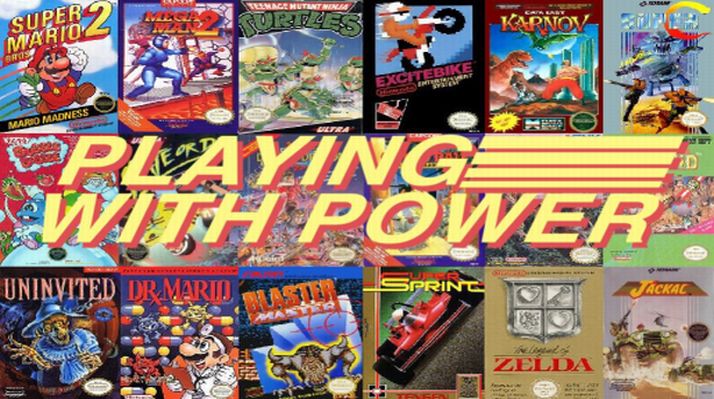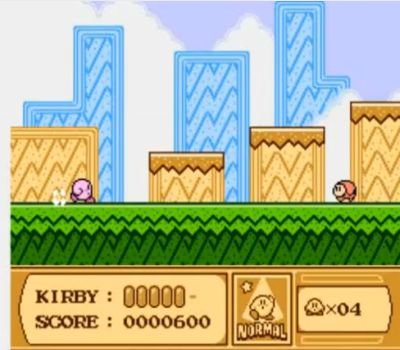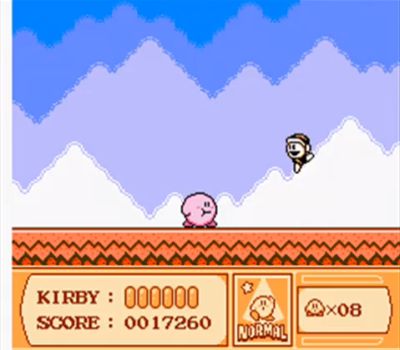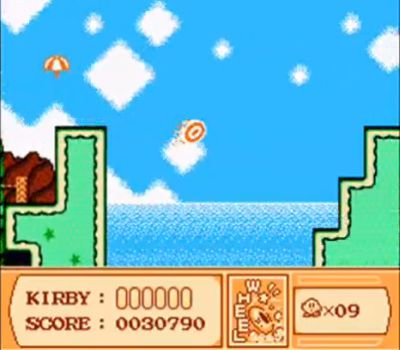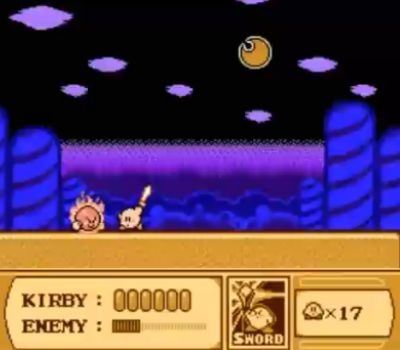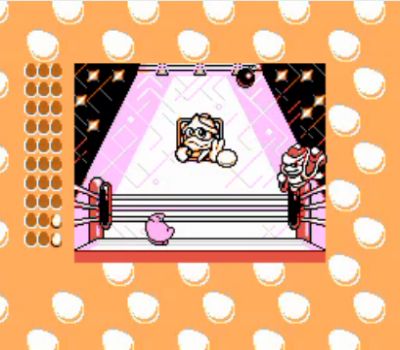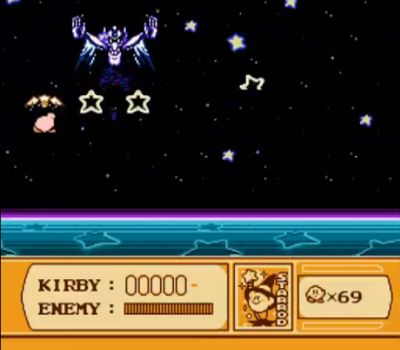Welcome to another edition of Playing With Power. The review article that looks at all things Nintendo Entertainment System. Well, today marks a momentous occasion. It’s not only my 100th official article for Freakin’ Awesome Network, but it also marks the one year anniversary of Playing With Power. And to celebrate, I wanted to make sure to talk about what may be one of my all time favorite NES games. But since I don’t currently own Darkwing Duck, I think this one will certainly do.
This week we’re talking about one of the last greats on the NES, and the game that really helped bring a beloved video game character to prominence. That character is of course the pink puffball Kirby. Does his lone NES adventure hold the test of time, or is it full of hot air? Let’s find out with this week’s review of Kirby’s Adventure.
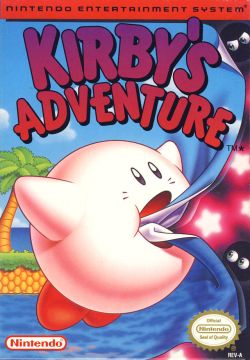 YEAR OF RELEASE: 1993
YEAR OF RELEASE: 1993
PUBLISHER: Nintendo
GENRE: Action Platformer
HAL Labs didn’t really see much major success on the NES prior to their biggest creation. They mainly released arcade ports of games like Joust, Defender II, and Millipede for the console, as well as a trilogy of games known as “The Adventures of Lolo”. And they would also be responsible for a certain major RPG that only saw a Japanese release (despite being pretty much ready for a North American release), in Mother, AKA Earthbound.
In 1992, Masahiro Sakurai and Hal Labs would make a Game Boy game based on their dummy character that was originally planned to be used to make a sophisticated image. But since they grew to love the little puffball’s design, they kept him as is and called him Kirby. The game Kirby’s Adventure saw launch in late 1992 to major success, despite some critical flack for the game’s shortness and simplicity.
The success of Kirby was enough to give HAL a second chance with the character, and they would develop a sequel for the NES, despite the NES being in it’s twilight days by this point. The game would upgrade the graphics, the look, and even the gameplay abilities of Kirby. Most of which would become staple pieces of the character’s repertoire from here on in. Kirby’s Adventure was released on March 26th, 1993, and was one of the NES’ last big hits. Though considering all that would follow it were games like Wario’s Woods, and Mega Man 6, that’s not too hard to do. It was also my last NES game bought in the early 90’s, before I would move on to the 16-bit era. So on a personal standpoint, there’s the nostalgia factor for me.
So, was this game as good as most people say? And did it help make a true star out of this beloved puffball? Let’s dive even further.
COVER STORY
Very simple, but works extremely well. I love this cover. It finally has Kirby in his right color of pink (the original Game Boy cover depicted him as all white) albeit not as pink as he would become down the line. It displays both Kirby’s flight ability as well as his ability to suck up items quite well, as we see he’s literally about to chew the scenery. It’s cute, and a definite eye catcher.
STORY
On the tiny planet known as Pop Star resides dreamland,a place where happiness abounds, and the dreams of the inhabitants are important. However, on one particular day, it appears that everyone’s dreams have vanished, including the ones of our hero Kirby. He goes to the dream fountain, the source of dreams to see what is the matter, and discovers that the powerful star rod is missing.
He also discovers that his long time nemesis King Dedede has broken the rod and given it to seven of his friends. It’s up to Kirby to restore the rod, and bring dreams back to dreamland. But could there be an even more sinister being interested in the star rod?
GAMEPLAY
Kirby’s Adventure is a one player action platformer. You control Kirby as you go through seven levels trying to collect the broken pieces of the star rod to restore the fountain of dreams. You control Kirby with the D-pad left and right, as well as use his flying ability by holding the up button. Kirby can jump with the A button, and use his suck ability with the B button. He can also do a slide attack by holding down and pressing A.
Kirby’s main attack in the game is his ability to suck up practically every enemy in the game. You suck them in with the B button, and can choose to swallow your foe by pressing down, or spitting them out with the B button The newest ability added to Kirby’s Adventure that wasn’t brought to the original Dreamland would be Kirby’s copy ability. By sucking in certain enemies and pressing down. This will give Kirby the ability of his previous enemy.
For example, if you eat an enemy with ice breath, you will get the ice ability. Or down an enemy who holds a sword, you’ll use the sword. Most abilities will be usable until you get hit and lose the energy star that contains the move, or you choose to discard it with the select button. Though some moves, mainly Crash and Mic, have a set number of times you can use it. And UFO, the most powerful ability of the game, can only be used in the level it’s in.
Other moves Kirby can collect include Beam, Suplex, Fireball, Laser, Wheel, Ball, Hammer, and Sleep. Though Sleep is one you definitely don’t want to be stuck using. You can also mix up and get a random ability if you suck up two ability holding creatures at the same time.
The game is broken into seven levels, each containing about 5-6 stages each. You go from The easy going Vegetable Valley, to the water filled Ice Cream Island, then traverse the tower of Butter Building, then to Grape Garden, Yogurt Yard, and finally Rainbow Resort, where you will face off with King Dedede (and perhaps the real villain of this story?)
The game has several other bosses, both classics from Kirby’s Dreamland, and new additions. These include the beloved tree Whispy Woods, the tree that shoots air and drops apples at Kirby. Paint Roller, an artist that can bring his painted creations to life. Mr. Shine and Mr. Bright (Yes, even the sun and moon don’t want Kirby to advance in his adventure). Kracko, the eye cloud. Heavy Mole, a massive mechanicall digging device.
And then there’s another addition to Kirby’s Adventure in the debut of Meta Knight, the mysterious masked being who is sometimes Kirby’s ally, but in this occasion he’s Kirby’s foe, and he seeks a sword fight with the puffball.
Kirby has six hit points, and starts with about three lives. To aid the puffball on his journey are a plethora of items including pep bottles that fill a few hit points, maxim tomatoes that fill his entire health bar, hyper candy that makes Kirby invincible for a period of time, and of course, plenty of 1-ups.
Levels in Kirby’s Adventure are usually quite short, and you’ll find the finish quickly. However, in later stages, levels will have a hidden switch inside, which must be activated to find everything in the game, and even sometimes make it to the next important area.
Aside from just stages for Kirby to go through, each level has number of doors that can give Kirby items to help in his quest. These include museum doors that hold two different abilities that Kirby can take at his leisure. There are also arenas, which will have Kirby face off with one of the larger enemies, and can earn him full health, as well as the item of the fallen enemy.
But what is perhaps the most entertaining doors are the three mini-game doors. These games can earn Kirby some extra lives. These games include Crane Game, where the player controls a crane claw trying to grab one of two Kirby dolls, a small one and a large one. There’s Quick Draw, where Kirby must face a gauntlet of foes in a shoot out, but must press the B button before his other foes. And finally there’s Egg Catcher, where Kirby must catch the eggs that King Dedede throws, and not the bombs.
After you defeat King Dedede, Kirby will restore the star rod to the fountain, but the game doesn’t end, as Kirby will have to battle the true evil entity of the game, Nightmare. Kirby will possess the star rod, and head to the moon to try and face off with this powerful demon. this battle can be tricky for beginners, but his pattern is pretty simple to get the hang of.
If you can 100% the game, you will earn a few rewards, including the ability to play all three mini-games whenever you want, and a harder version of Kirby’s Adventure, where you have to beat it in one go with half the health.
While the game is fairly easy, save for some tricky areas in the later stages, there are unlimited continues, as well as auto-saving after every level. So, you can tackle this game how you see fit. In short bursts, or going for a long run. The controls all work perfect, with barely any flaws. And there’s enough content to keep you entertained the entire adventure through.
GRAPHICS
If there’s any game that shows the graphical power of the NES best, it may just be Kirby’s Adventure. Levels are all well detailed, sprites are well designed, Kirby’s adorableness is in full force here, and the game makes use of the NES’s limited color palette to its best, making for a colorful, and cute looking game. Perhaps the last big NES title to really do so.
MUSIC
The game has beautiful music. Jun Ishikawa and Hirokazu Ando deliver a feast for the ears. Every level has its own vibrant tune, and it always fits the tone of the game, with enough of an adventurous tone, as well as just sounding cute and fluffy, just what this game needs in a soundtrack. It’s easily one of the best on the NES. My favorite songs include Yogurt Yard and Grape Gardens.
OVERALL THOUGHTS
Kirby’s Adventure is easily in my top 5 favorite NES games of all time for so many reasons. Great control, fun and inventive gameplay, excellent graphics that manage to hold their own despite being an 8-bit game competing in a 16-Bit world. And don’t forget that wonderful music. It gives me a warm feeling of nostalgia from my childhood, as well as reminds me of why I love this console like I do. While I feel other major NES game releases by this time didn’t encapsulate the true feeling of NES awesomeness by this time, it’s obvious that Kirby’s Adventure definitely holds up better than most late NES titles (sorry Zoda’s Revenge, I still like you, but you ain’t Kirby).
If you haven’t played it, I definitely recommend it. It’s been ported onto the Virtual Console, been remade for the Game Boy Advance as “Nightmare in Dreamland”, and most recently re-released as part of the Kirby 20th Anniversary Edition on the Wii along with other classics including Kirby Super Star, and Kirby 64: The Crystal Shards. If you haven’t had a chance to go on this adventure, or need and excuse to play it again, I suggest you do so. It’s one Adventure worth going on again and again, and will always remain in my heart as one of my favorite games ever.
RATING: Thumbs Up.
Thanks to everyone who has stuck with me this past year, and helped keep Playing With Power alive and awesome. I definitely have plenty of ideas under way for the second year of PWP, and hopefully they’ll entertain each and every one of you, and maybe make you want to dust off that old great grey box. So until next week, keep playing.

